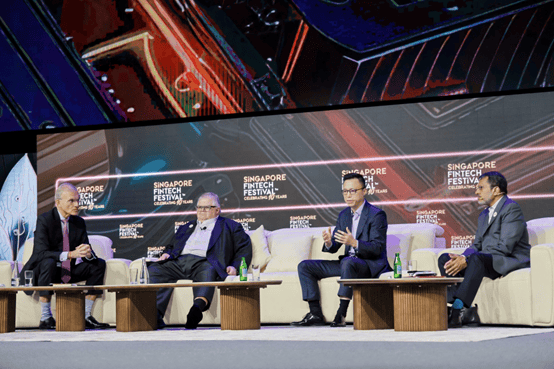
Community Banks and AI: A real-world conversation

Slaven Bilac, CEO, Agent IQ

Jackie Verkuyl, EVP/CFO, BAC Community Bank
Slaven Bilac, CEO, Agent IQ
Jackie Verkuyl, EVP/CFO, BAC Community Bank
From the perspective of a banker, what exactly is AI and how is it actually being used today?
Slaven: Thinking of AI as just generative AI, like ChatGPT, is a little misleading. I like to think of AI as a collection of tools that can be applied to help bankers solve specific problems, and that’s how we’re really seeing it applied in a meaningful way today. If bankers just focus on the newness of the technology and its speed of change and advancement, that will likely just mislead them and eventually they’ll end up coming back to trying to solve the original problem. The simplest, most direct way to have success with AI is by applying the right tool to the right problem to begin with. The best strategy is to start small and then iterate from there.
Where are you seeing the most potential opportunities for applying AI tools within financial institutions?
Slaven: For ChatGPT, which gets a lot of attention, it doesn’t actually get used that much, maybe on the internal side for content generation and ideation and helping creative processes that are used in marketing or similar initiatives. In production, there is a lot more success in the use of AI for fraud detection, analyzing large amounts of data, loan decisioning and assessing risk. Increasingly, we see AI used in an externally visible form to enhance customer service by answering easy and routine questions for customers, which helps banks realize cost savings and focus their human resources on higher value-add types of questions which require more empathy and thoughtful answers to get to the right resolution for the customer.
Tell us about BAC Community Bank…
Jackie: BAC is a community bank based in Stockton, Calif. with about $850 million in assets that focuses mainly on serving one market area through our eight branches. We’re unique in that we are primarily a commercial bank and the majority of our customers are commercial customers, the majority of our lending is commercial loans, so our biggest selling point is the quality of the relationships with our customers, and we are really focused on being a relationship bank.
Within a high touch, community bank relationship orientation, what were some specific goals that banks like yours are looking to achieve?
Jackie: For us, we were thinking about ways to leverage AI technology to have a better level of communication, a better tool, a better process for working with our existing customers. Specifically, we wanted to make it easier for our relationship managers to communicate effectively with their specific customers and it was important to be able to customize the solution to support our bank’s unique needs and the needs of our commercial customers.
How does that community bank relationship orientation inform the way that technology teams think about leveraging AI for community financial institutions?
Slaven: Our focus is on how we can help bankers take the management of their customer relationships that might have been previously happening in-branch or through multiple channels and put them into a digital space that all resides in one place. AI makes that more efficient and scalable, but that relationship management, maintenance, development is the core value-add and is ultimately why we are able to be successful for our clients. AI is not a static entity, so we are always communicating with our clients and receiving feedback about customer experience, agent or banker experience, and then incorporating that into our platform. All the while, we are making sure we are tooling the available AI and suitably modifying it to address the specific problems that we are talking about. So, it’s not about just taking the available AI from Google or other providers and using it as is, but rather, modifying the AI so that it fits the scale and context of the problem we’re trying to solve. This helps bank employees focus more of their attention on building and growing customer relationships – letting their human strengths shine – and have AI do more of the mundane tasks that would be hard or complex otherwise.
What are some important considerations for bankers who are considering utilization of AI?
Jackie: Speed of implementation is very important for bankers, so working with an AI provider who is able to listen to our requests and clearly understand what we want to achieve and then collaborate to deliver that quickly is key. Most community banks don’t have control over all of their technology, so they are often restricted by what their vendor is able to do, so working with highly responsive technology partners makes it much easier for a bank to dip its toe into something like AI.
Another consideration is to leverage AI to not replace – but enhance – human connections and relationships. What is important is that all of our customers have the option to select their own personal banker. We’ve made it easier for our customers and bankers by having our chat tool, which we call Smart ALAC, take over the easy questions and for more complex questions, provide customers the option to connect with someone at the bank to talk it through in more detail.
Finally, flexibility. This means taking calls out of our call center by allowing customers to answer their own questions a lot of the time or point them to a specific place on our website where we can provide them with pre-prepared documentation about accounts or products or rates, right there on the spot. Because of our predominantly commercial customer base, it was important to provide all of these capabilities both via the mobile channel and the website since we’re often interacting with an office manager or business owner who are at their desk working on their PC and that’s how they prefer to interact with us.
Slaven: First, bankers should clearly articulate what they want to achieve, whether that’s improving relationships with customers or trying to differentiate their service in the marketplace. Then, they should start small. See what works for their bank or for a particular customer set and their specific needs, and then iterate from there. AI platforms are quite complex and have lots of capabilities that are highly configurable, but it’s hard to know what configurations will work best for your bank up front. Part of the success equation is really figuring it out in gradual steps which match the bank’s desired experience and risk profile and that ultimately enhance the experience for customers and bank employees.
People like to have relationships and they are more comfortable working with someone that they know, so the goal of any relationship-focused institution should always be to help establish that relationship and drive a better experience. AI makes this more efficient and scalable but should not be there to try and replace a human. It should provide the bank with the ability to adjust the dial to deliver what is appropriate and suitable for the bank.


